Transsensorial Gateway Made
Transsensorial Gateway Made by Noa* Network of Architecture At Milan Design Week 2022
Project Specifications
Project Name: Transsensorial Gateway
Architects: noa* Network of Architecture
Project Type: Cultural Architecture
Location: Università degli Studi di Milano, Milan, Italy
Project Year: 2022
Project Area: 50 sq.m
Execution Light & technical planning: ewo
Sound Design: Ebner Film + Music, Lois Lane
Production & assembly of beams: Nieder
Beam material suppliers: MirrorInox
Milan Design Week is the world’s largest yearly design gathering that includes the massive Salone del Mobile furniture exhibition along with hundreds of activities happening around the city. In addition to the Salone del Mobile, a slew of additional exhibitions, artworks, and events take place throughout Milan. The fuorisalone is a series of events that happen in Milan’s numerous design zones.
Architecture is inextricably link to humans. The construction of a built environment encourages interaction between people who reside in it. This notion served as the starting point for the Transsensional Gateway installation by noa* network of architecture.
The main idea was to create a light and sound environment that greets and welcomes people as they enter the exhibition space.
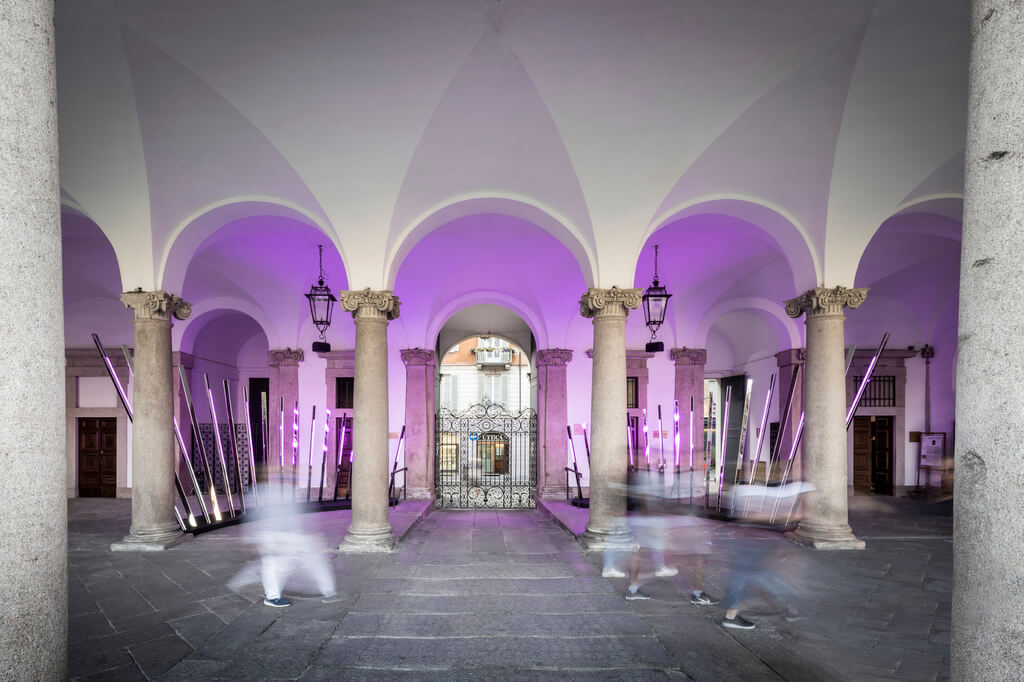
Source: adsttc.com
“Transsensorial Gateway,” component of the sweeping Creative Connections display, was designed by Italy- and Germany-based company Network of Architecture (noa*) as one of several citywide installations created for Fuorisalone. The highly artistic work, which was on display at the University of Milan, is made up of a tiara of structural lighting beams that ascend to different heights to emphasize the cultural significance of the 17th-century portico it inhabits. A lighting and acoustic composition also produce a distinctive light and sound choreography.
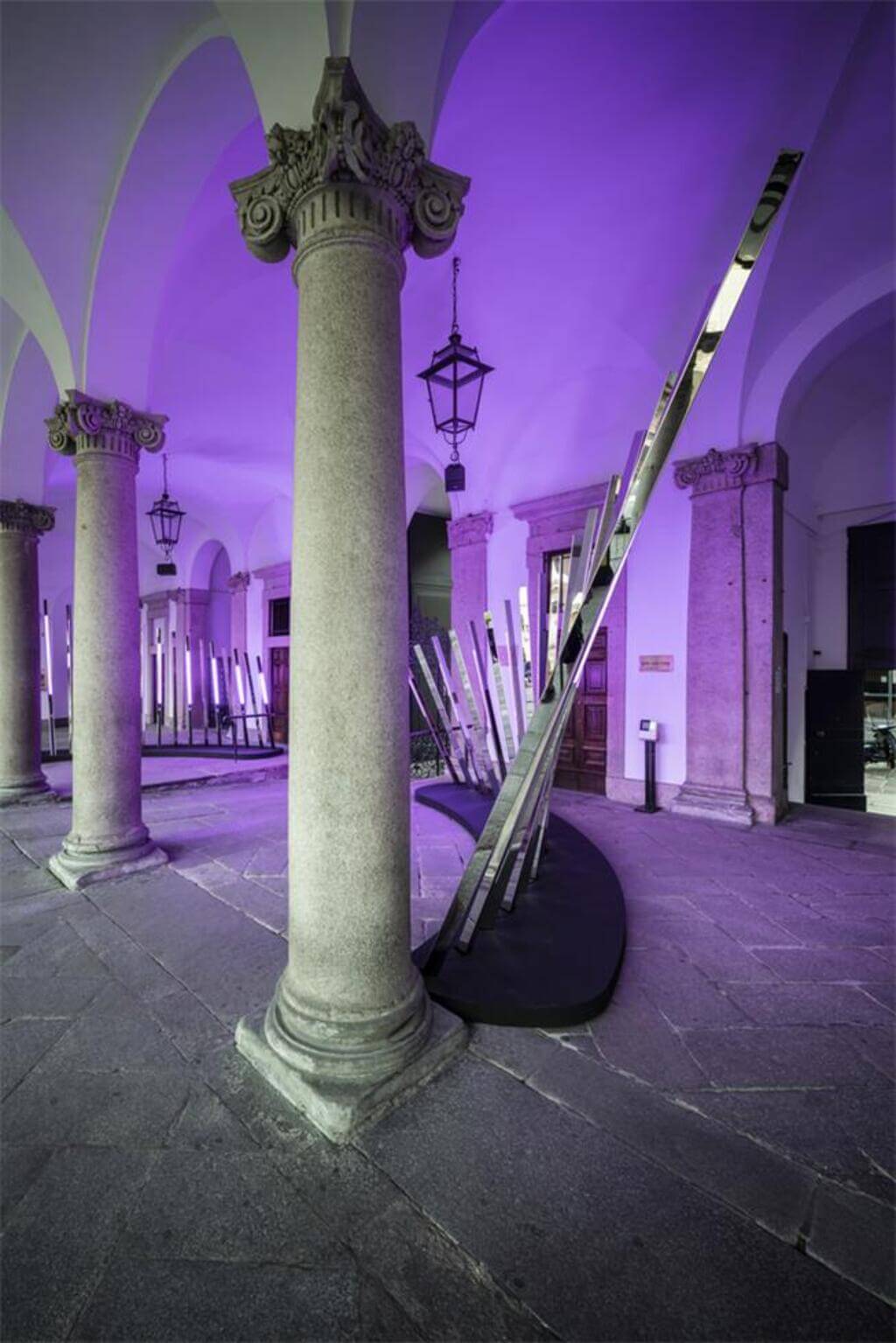
Image Source: gavindesign.com
This creative installation is formed by stainless steel and is covered with mirrors. These are places on both sides of the entryway, enhancing the appearance of people occupying the area around them.
The artwork incorporated light, music, and motion in direct conversation with people and the setting, and was developed as a sculptural piece that combined many components.
The beams of light form bonds between individuals, establishing “bridges” between them. The light responds to the presence of guests while also interpreting how they interact with one another.
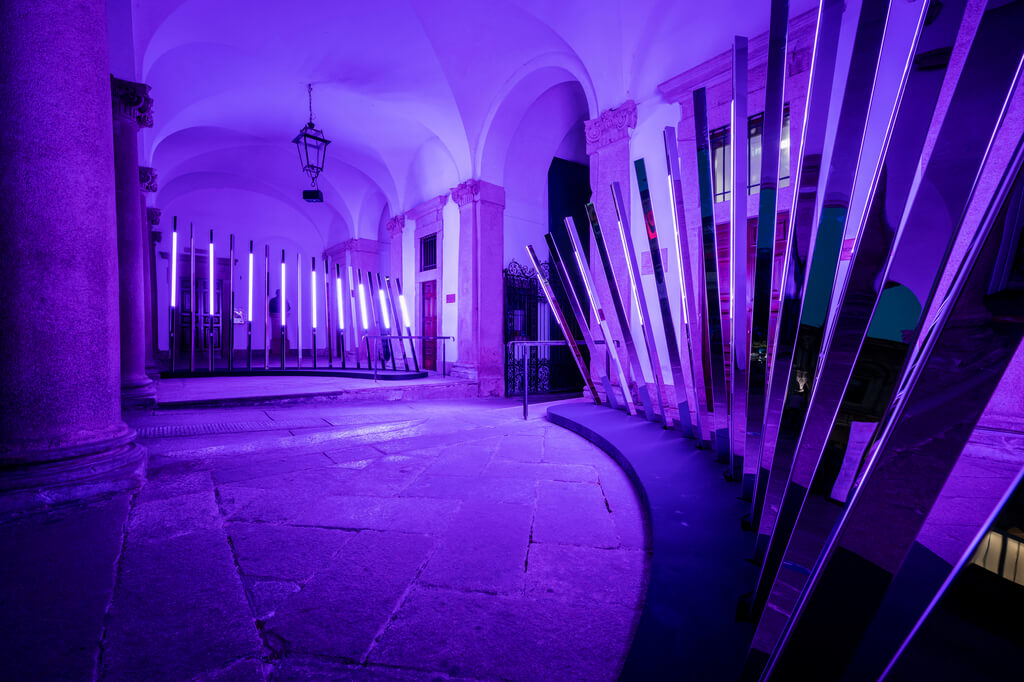
Source: adsttc.com
A luminous and musical symphony is added by establishing a “transsensorial” mechanism, which is not only directly connected to mass and volume of the place, and therefore to the visitor’ footfall, but also becomes the installation’s main driving power.
According to noa*The work produces an authentic and distinctive light and sound rhythm that enhances the emotional experience of guests. Each piece, which ranges in height from 2.5 to 4 meters and has a triangular cross-section of 7×7 sq. cm, was created by the architects. The South Tyrolean firm EWO’s technical expertise and knowledge allowed the notion of involvement to be translated into a working light and technology system. LED modules placed vertically and fitted with a unique anti-glare technology known as ewoLightTile lighten up the steel light beams.
Ebner Film + Music developed the sound, which was generated specifically for this project and tailored to react to the various conditions identified by the sensors. The speaker system in the exhibition space operates the work, while sensor nodes that adjust light and sound based on human interactions are dispersed along the 34 beams.
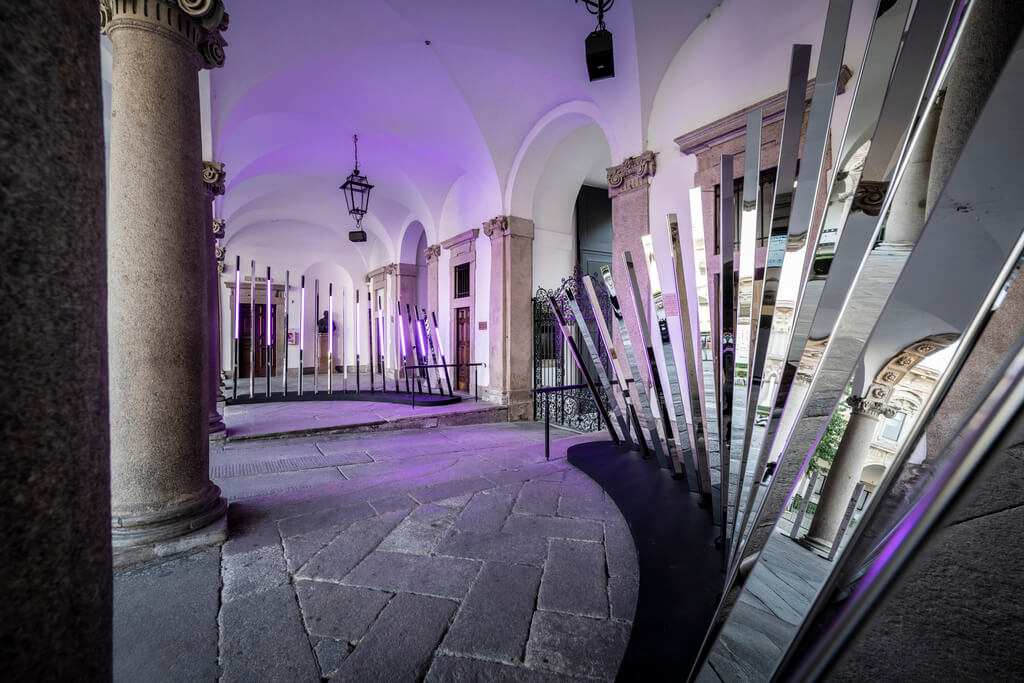
Image Source: adsttc.com
“We wanted the visitors to be part of a bigger happening—to feel part of a collective,” stated noa* partner Andreas Profanter.
“Even if you come alone to visit the installation, you feel connected and embraced by a particular force. You don’t have to have direct contact with other people, each presence is equally manifested through the landscape of light and sound.”
“We loved working on this project because it brings together three dimensions: architecture, sound, and light,” he further added. “The interactivity of the installation means that it is constantly changing depending on the presence of people.”
The result of this creative vision was a dynamic sculptural work combining light work, sounds, and movement to form a relationship between the people and space, which further allows people to relate to themselves and each other. The transensory experience served by a combination of music and light is not only proportional to the size and gathering of the space but also records the physical and emotional interactions through sensors that control intensity, colour, modulation, and music to produce a vibrant and symphonic romance depending on the way people interact.
Perception and ideas are frequently carried out in an abstract environment in design and architecture. Where space is dealt with theoretically — a space or unique spatial condition is largely worked out without physically occupying it. For architectural practise, how we physically connect with space, both real and abstract design space is critical. It is required to think about how physical perception interacts with and impacts design processes more seriously.
Here, in Transsensorial Gateway design, the design team understood how abstract forms, light, and sound can be used to enhance the user experience. A sensory design doesn’t always need large spaces to be ornamented with heavy architectural works. This can be achieved by a small thoughtful installation as well with an appropriate approach towards designing. The project leads to an interactive experience with the aural, visual and physical architecture as it explores and plays around with varying heights and colours.
The design studio collaborated with creative heads to explore beyond the limits for this extraordinary installation. The main challenge faced by the team was the technical handling of merging spaces, and the design language of the built environment with light and sound. The end product enhances a user’s experience and serves them with a sensory experience in the exhibition space. It is a design that interacts and forms a relationship with your senses rather than being a conventional design impacting your physicality.
While architecture provides fundamental human necessities such as shelter and protection, the design also has an emotional influence on anybody who comes into contact with it. A structure may elicit a variety of feelings, whether intentional or not, such as belonging, wonder, terror, or hope. Human-centred architecture aims to enhance beneficial interactions. Between humans and buildings by putting them at the centre of the design process.
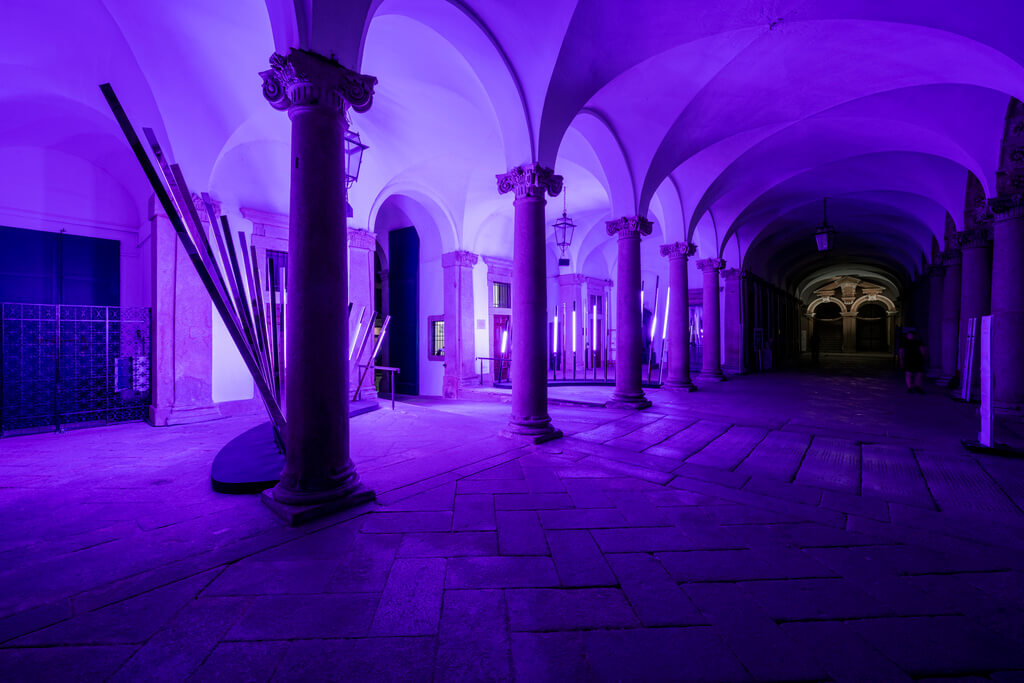
Source: adsttc.com
The designed thresholds form a transsensorial space that leads to storytelling amongst the users on memory and interaction. It connects the people to the past by respecting the presence of the 17th-century portico it is install in. The modern design with an innovative technological approach pays tribute to the strong architectural language of the past and enhances its visual appeal.
This is ambient landscaping that charges the senses through light and music and intends to enhance the spatial experience.
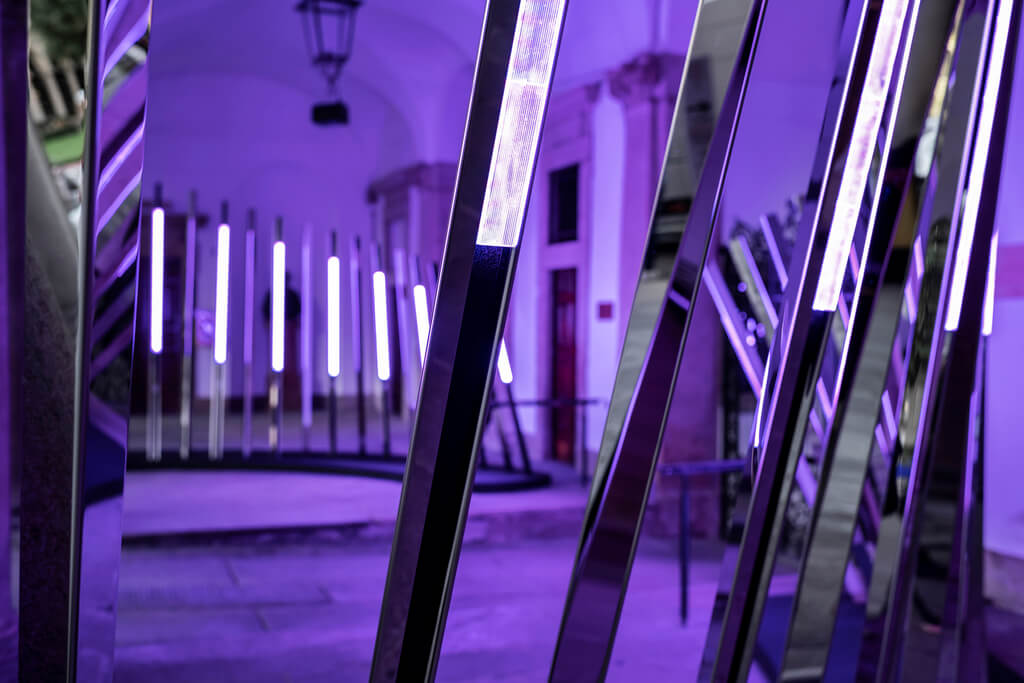
Image Source: adsttc.com
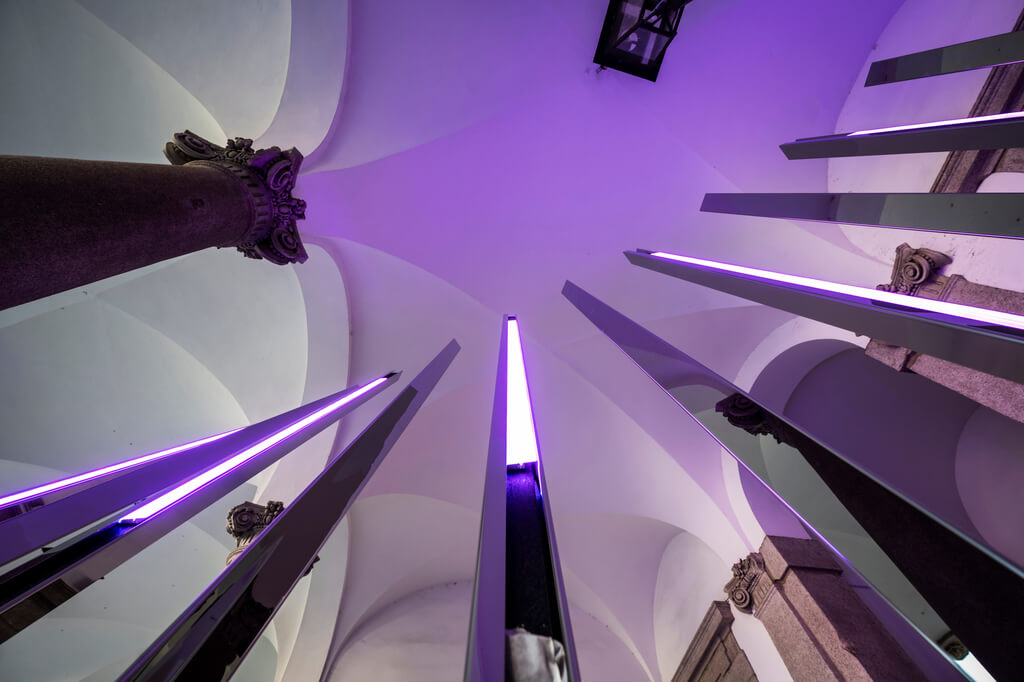
Source: adsttc.com
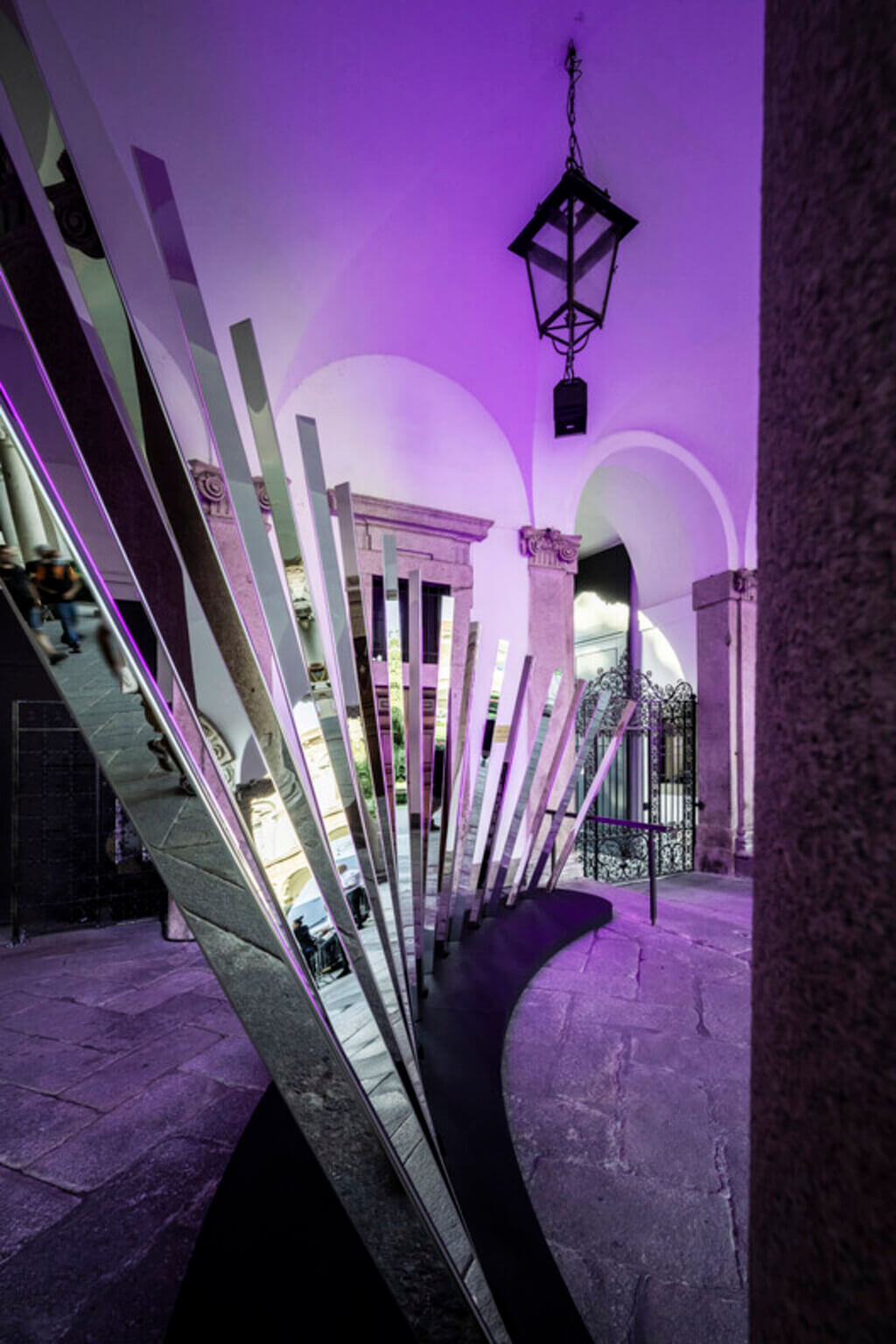
Image Source: adsttc.com
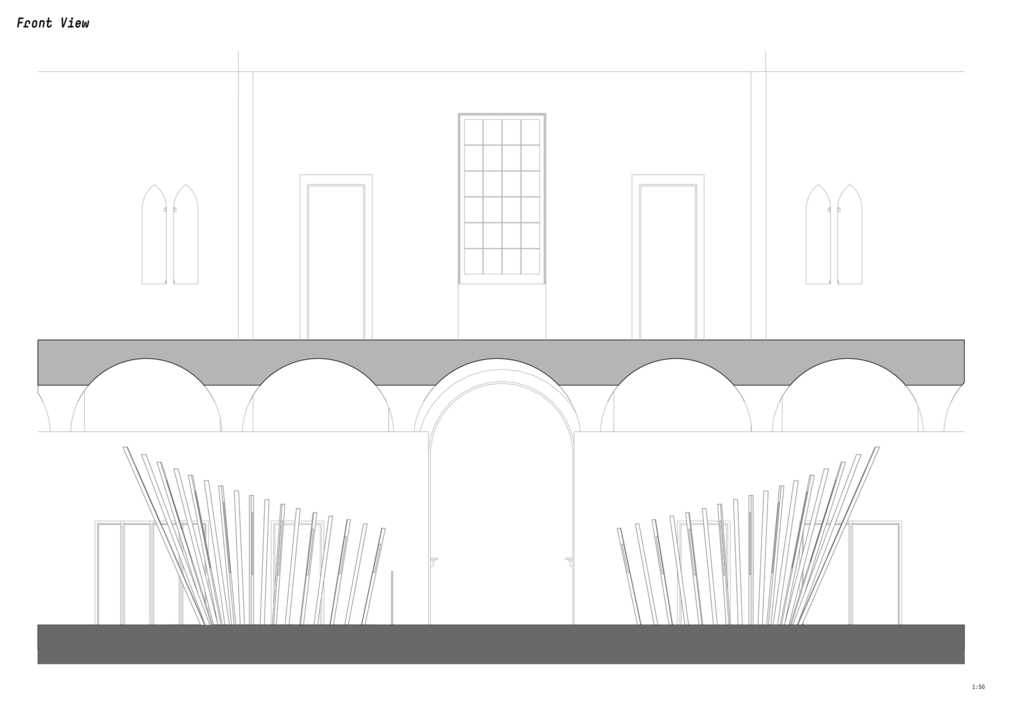
Source: adsttc.com
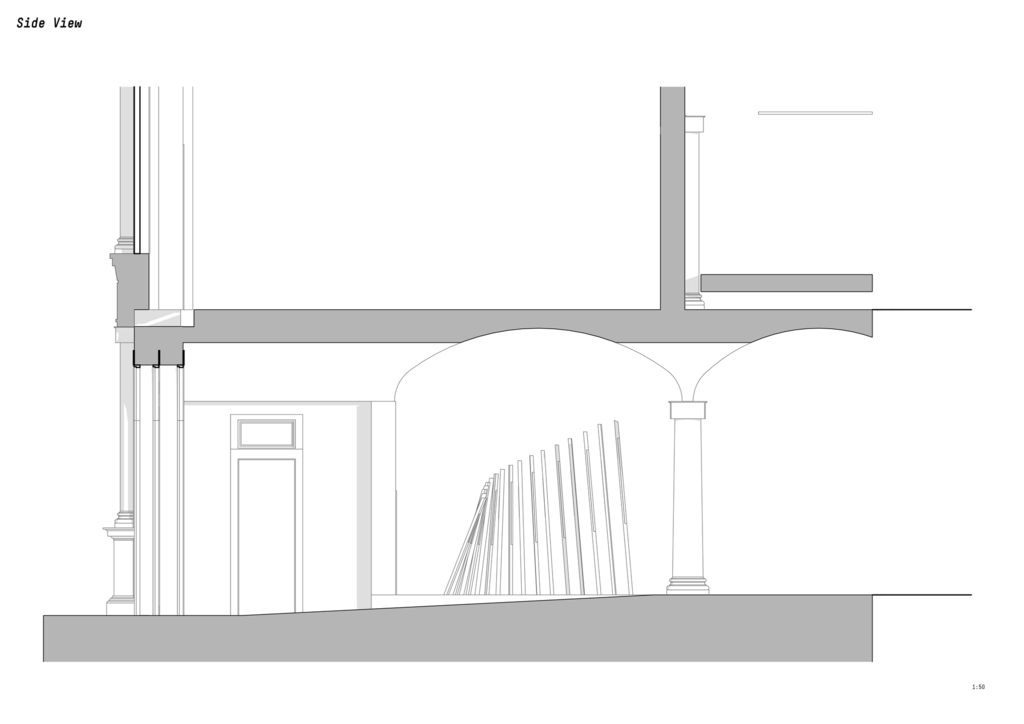
Image Source: adsttc.com
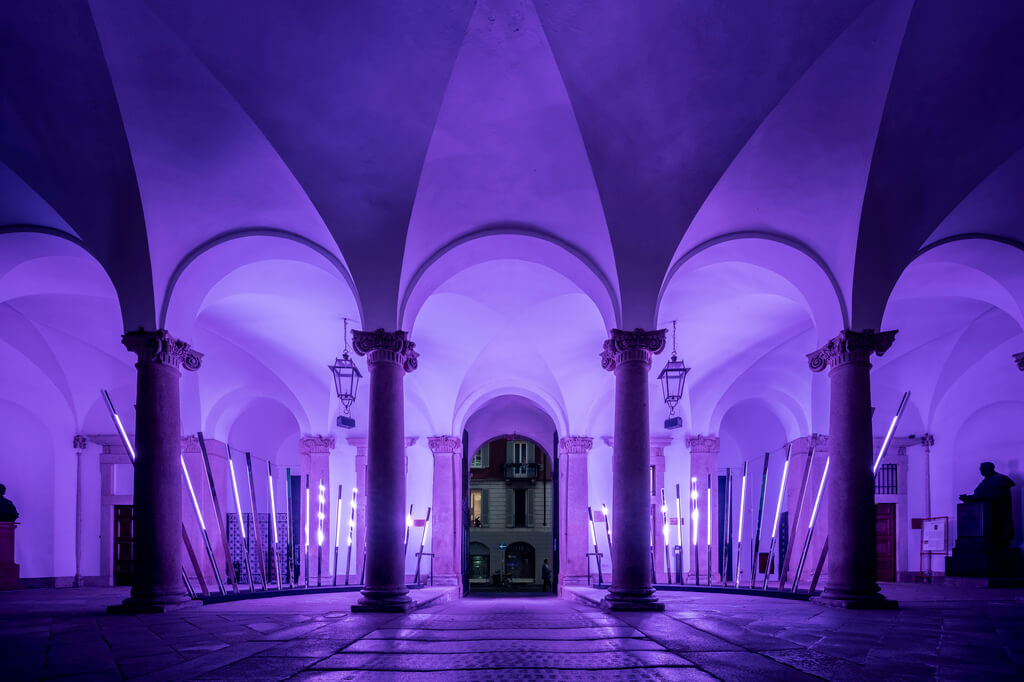
Source: adsttc.com
The designers have envisioned a futuristic approach in this installation. That plays with technology to evoke visitor’s senses in order to serve them with a wholesome experience. Human existence is nearly impossible without interaction with the built environment and spaces. Each of us passes by a continuum of extremely different spaces of varying function and sizes.
Architects have the calibre and a role to play in this interplay. Between the designed spaces and people by identifying the underlying potential in the sites. These factors influence how the architectural language adapts from one situation to the next. Designers continually re-construct their viewpoints, seeing, listening to, and sensing the area from a variety of positions. And this has been exhibit very well in The Transsensorial Gateway. By noa* network of architecture for Milan Design Week 2022. The installation speaks a design language that goes deep down. To touch human senses and serve them with a unique experience.






